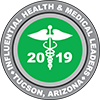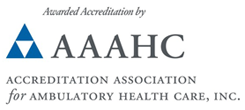In its most basic terms, a trigger point is an exceptionally sensitive area of skeletal muscle. You might have noticed one and recognized it as a “knot” in your back or, more rarely, an extremity like a leg.
How trigger points cause pain and what to do about it
Fascia is a thin, fibrous connective tissue that covers most of the body’s muscles and organs. When muscles are injured or overused, damage to the fascia results in inflammation and what is known as an active trigger point if the fascia does not properly heal. Furthermore, fascia gets less flexible as we age, which means that the risk of damaged fascia increases as well. The fascia can form scar tissue and interfere with the normal function of the muscles it surrounds.
What is a trigger point?
When fascia is injured and results in an active trigger point, it can cause what is known as “referred pain.” This means that the pain may not align with the irritated spot on the muscle. This certainly makes it difficult for self-diagnosis and incredibly difficult for health care professionals to treat without the proper skills and background. Alternatively, a latent trigger point is one that is not referring pain to anywhere else in the body and is instead tender when touched directly.
Common Site of Trigger Points
A very common site of trigger points is the upper back area between the shoulders or in the upper spine (trapezius muscles). In addition to the back, neck or should pain you may anticipate, these trigger points can become irritated and cause migraines and tension headaches.
There are multiple treatment options for people suffering from aggravated trigger points, ranging from self-massage or self-myofascial release to relieve inflammation, steroid injections, anesthetic injections or even the insertion of a needle to relieve pressure with no medication being injected at all (this is known as dry needling). Understandably, most people prefer to exhaust options to treat non-serious cases of trigger point overstimulation on their own before consulting with medical professionals to pursue other options, or as a way to supplement other treatments they are pursuing chronic or recurring pain. Additionally, the techniques outlined here are more effective when practiced regularly, meaning that it is much more efficient to learn techniques to treat ourselves to augment professional treatments (daily if you have a serious case of if you work out significantly on a daily basis) without the added inconvenience or expense of seeing a health professional that frequently.
What is Self Myofascial Release?
Manual therapy is among the foremost treatments for pain resulting from active trigger points. Self-myofascial release involves exercises to increase the range of motion and decrease pain in the affected muscle. Many involve tools like foam rollers and tennis balls. The number of repetitions and frequency of self-myofascial release is highly individualized and will depend on the cause and severity of trigger point caused pain. Self-myofascial release is also helpful in finding and identifying trigger points throughout the body.
For exercises that utilize foam rollers, check out this articlewith illustrations. One simple technique for self-myofascial release with the more easily acquired tennis ball or with your fingers is called the slow burn: Once you have zeroed in on the trigger point after rolling your tennis ball or your fingers over it, hold it there and apply pressure in the same direction as the restriction. It may take upwards of 30 seconds to happen, but you will want to maintain pressure until you feel a burning sensation (an indication that a chemical reaction is taking place in your muscle).
Trigger Point Symptoms
As mentioned, the amount of effort required will vary from person to person. A couple of minutes every few days may be enough for people with minor trigger point symptoms, but those facing serious pain because of their active trigger points will find that even engaging in self-myofascial release several times every day will not provide them the relief for which they hope. In those cases, it may make sense to schedule a consultation. A qualified health care professional will be able to assess your situation and make recommendations based on your condition and lifestyle.
If you would like to learn more about self-myofascial release or have questions about trigger points, call to schedule a consultation. We would love to chat with you about your condition and talk through some techniques you may be able to use for efficient self-myofascial release at home.




